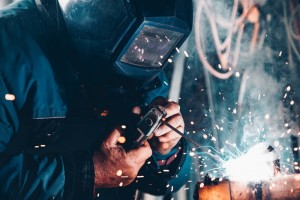As professionals, we all want to ensure that our workplaces are safe and healthy for ourselves and our colleagues. Unfortunately, many industries involve processes that generate harmful fumes and particles, such as welding. Welding is a vital process that is used in numerous industries, but it also poses significant health risks to workers, especially if they are not adequately protected from the harmful fumes generated during the process.

Welding fumes are a complex mixture of gases and fine particles that can be inhaled by workers and cause respiratory problems, lung cancer, and other health issues. To protect workers from overexposure, regulatory agencies have established permissible exposure limits for welding fumes. However, many workers may still be at risk of exposure if proper safety measures are not in place.
As safety professionals, we have a responsibility to monitor exposure to welding fumes and take proactive steps to protect workers from harm. Here are some reasons why monitoring exposure to welding fumes is critical and what steps we can take to reduce exposure.
Firstly, monitoring exposure to welding fumes can help identify areas of concern and provide data to inform safety measures. Exposure assessments can be conducted using state-of-the-art monitoring equipment to collect data on the types and levels of welding fumes present in the air. The data collected can be analyzed to identify areas of concern, develop recommendations for reducing exposure and implement appropriate control measures.
Secondly, monitoring exposure to welding fumes can help reduce the risks associated with welding fume exposure. By monitoring exposure levels, safety professionals can assess whether workers are at risk of overexposure and take steps to mitigate those risks. This could involve implementing measures such as improving ventilation, using personal protective equipment, or introducing engineering controls to reduce exposure.
Finally, monitoring exposure to welding fumes can help ensure that workplaces are compliant with safety regulations. Regulatory agencies have established exposure limits for welding fumes to protect workers from overexposure. By monitoring exposure levels, safety professionals can ensure that these regulations are being met and that workers are not at risk of harm.
Monitoring exposure to welding fumes is critical to ensuring that workplaces are safe and healthy for workers. By conducting exposure assessments, identifying areas of concern, and implementing appropriate control measures, we can reduce the risks associated with welding fume exposure. As safety professionals, it is our responsibility to prioritize the health and safety of workers and ensure that we are taking proactive steps to protect them from harm.
Contact us for a welding fumes risk assessment today
Airsafe’s trained and qualified occupational hygienists can be dispatched today to conduct exposure monitoring and provide recommendations on health monitoring.
For any questions about welding fumes, call Airsafe on 1300 888 338.



